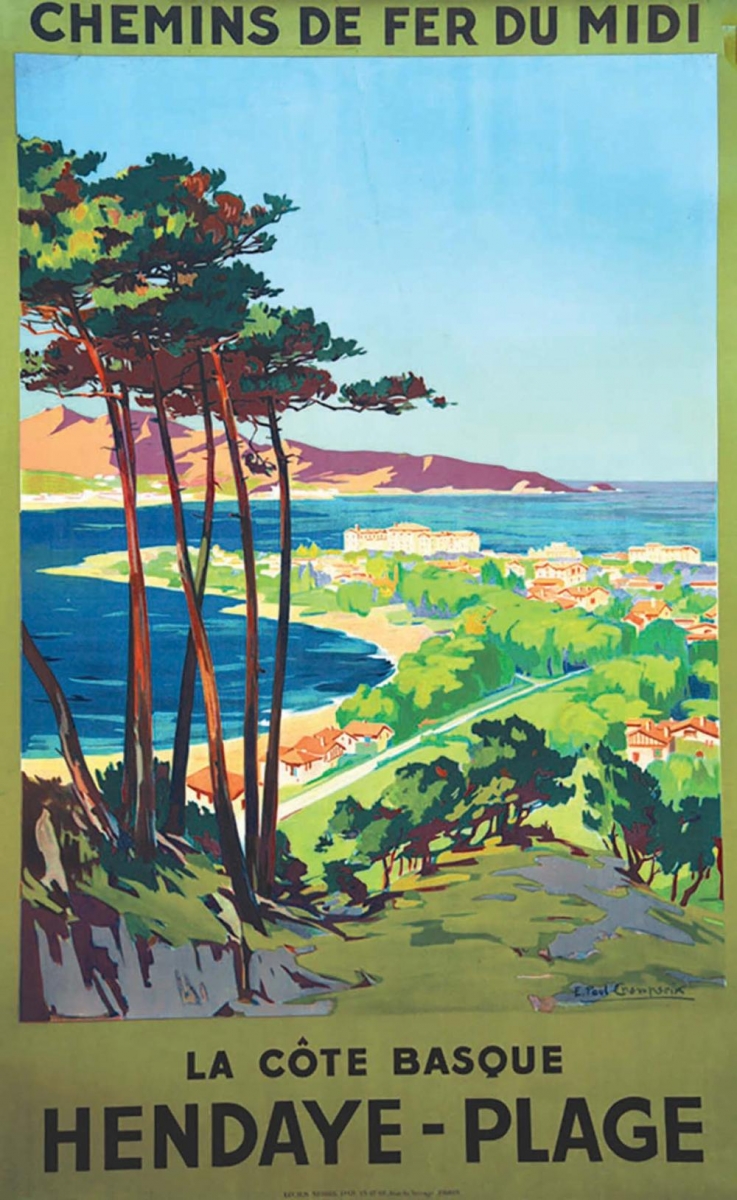 This past spring, as I was putting the final touches on my new book Reading Hemingway's The Garden of Eden (Kent State UP, 2023), I began to wonder if I could do something useful with the hundreds of images I’d accumulated during my research. Even a generously illustrated book, I knew, couldn’t begin to reproduce them all, so I decided to winnow them down to the best 150 and create a digital visual companion for the book. This was the origin of “Seeing Hemingway’s The Garden of Eden.”
This past spring, as I was putting the final touches on my new book Reading Hemingway's The Garden of Eden (Kent State UP, 2023), I began to wonder if I could do something useful with the hundreds of images I’d accumulated during my research. Even a generously illustrated book, I knew, couldn’t begin to reproduce them all, so I decided to winnow them down to the best 150 and create a digital visual companion for the book. This was the origin of “Seeing Hemingway’s The Garden of Eden.”
Fittingly enough, Hemingway’s posthumous novel is deeply interested in the question of how and whether to illustrate verbal narratives. With wild ambition, Catherine Bourne plans to ask Marie Laurencin, Jules Pascin, André Derain, Raoul Dufy, and Pablo Picasso to illustrate the honeymoon narrative David is writing about their erotic adventures. In the Eden manuscript, she is even more interested in securing the work of another artist: Nick Sheldon. The painters Nick and Barbara Sheldon—omitted from the Scribner’s edition (along with 60% of the manuscript)—are major figures in the novel Hemingway wrote, and Barbara imagines a series of “colour plates” and “snap shots” of Nick painting, and of her painting Nick, to illustrate the book their friend Andrew Murray is writing about them. David, too, tries to write about the Sheldons, but when he struggles to convey in language the qualities and power of Nick’s paintings, he rejects the ekphrastic urge to represent visual art verbally and decides it would be better just to print reproductions of the works themselves. And Hemingway felt similarly. Though he valued opportunities to pair his language with great visual art, he disliked the idea of illustration. As he wrote in the preface to a 1948 illustrated edition of A Farewell to Arms (a preface that never directly mentions the illustrator or the images in that volume), “unless [an illustrator] is as good or better a painter or draftsman than the writer is a writer, there can be no more disappointing thing than for the writer to see the things and places and people that he remembers making drawn and put on paper by some one else who was not there” (HMF 96-97). The pairing of text and image can be highly productive, he felt, but one should not try to render image as text or text as image.
Of course, the images I assemble are not intended as illustrations of the novel. A better analogy might be the informative bullfighting photographs that Hemingway carefully curated for Death in the Afternoon. But the images do take you on a sort of visual tour through the full manuscript of Eden. And in a novel so devoted to the visual arts—with references to Bosch, Braque, Bruegel, Cézanne, del Sarto, Derain, Dubois, Dufy, Dunoyer de Segonzac, Dürer, El Greco, Gauguin, Goya, Gris, Homer, Jongkind, Klee, Laurencin, Pascin, Patinir, Picasso, Peirce, Rodin, Teniers, and Tintoretto—there’s value in assembling images of relevant works by these artists, much as David Bourne wants to reproduce the work of Nick Sheldon instead of describing it.
Work Cited
Hemingway, Ernest. Hemingway and the Mechanism of Fame: Statements, Public Letters, Introductions, Forewords, Prefaces, Blurbs, Reviews, and Endorsements. Edited by Matthew Bruccoli, U South Carolina P, 2006.
Carl Eby is professor of English at Appalachian State University and president of the Ernest Hemingway Foundation and Society. His publications include Hemingway's Fetishism: Psychoanalysis and the Mirror of Manhood (SUNY Press) and Hemingway's Spain: Imagining the Spanish World (Kent State University Press, co-edited with Mark Cirino). His new book Reading Hemingway's The Garden of Eden has just been published by Kent State University Press.